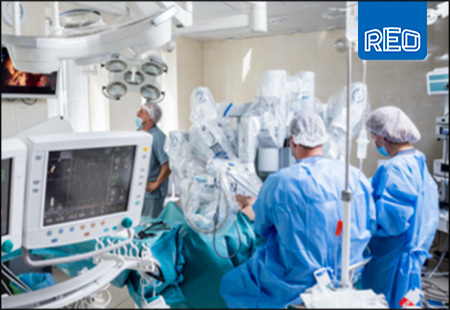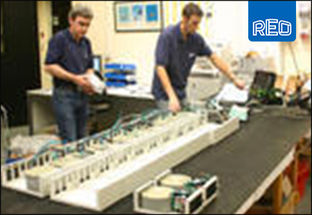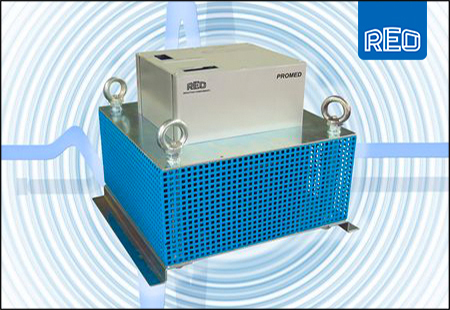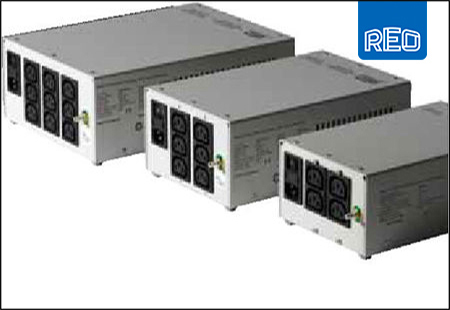Setting new standards for healthcare EMC
From November of this year, all medical electrical equipment and systems supplied in the EU must comply with a tough new electromagnetic compatibility (EMC) standard – EN 60601-1-2:2001. John Symonds of REO UK examines the need for this standard, discusses its implications, and provides guidance on meeting its requirements.
When considering EMC, few environments are more challenging than hospitals and healthcare facilities. Here, equipment such as electrocardiograph (ECG) and electro-encephalograph (EEC) machines, which depend on the reliable detection of millivolt- or even microvolt-level signals, frequently share the same site as electrosurgery and diathermy units which necessarily produce high levels of radio-frequency emissions.
Further, achieving EMC compliance in healthcare facilities is very much a safety issue. An instrument affected by electromagnetic interference (EMI), which gives false readings, may lead to incorrect diagnosis and treatment. Even worse, when EMI causes critical systems, such as defibrillators, to malfunction, patients’ lives are at risk. This is not mere speculation – there are well-documented cases of patients dying as a result of EMI problems.
The special risks associated with EMI in healthcare applications have been reflected in product and performance standards for many years. Prior to 1993, individual countries in Europe had their own standards for medical equipment, with varying provisions for EMC testing.
In 1993, however, the International Electrotechnical Commission produced the first edition of IEC60601-1-2, an EMC standard specifically for medical equipment, which contains requirements relating both to the emission of EMI from the equipment and to its susceptibility to the effects of EMI from external sources. This standard was subsequently adopted by CENELEC as a European standard and published as EN 60601-1-2.
Since 1993, there have been many changes that have affected the electromagnetic environment in hospitals. For example, the use of mobile telephones has become widespread and new communications systems such as TETRA, which have even greater potential to generate EMI, have appeared. At the same time, increasing reliance is being placed on the use of electronics for patient monitoring, diagnostic, and life-support systems.
These changes would have been reason enough to make a revision of EN 60601-1-2 highly desirable, but there have also been major developments in the more general EMC standards that underpin EN 60601-1-2. In particular, the IEC 801-x standards, on which the original version of EN 60601-1-2 was based, have been superseded by the EN 61000-4-x series.
Taken together, these changes meant that, if EN 60601-1-2 was to relate to present-day conditions and continue to provide useful assurances about patient safety, updating was essential. This process was, in fact, started in the late 1990s, and culminated in the publication of EN 60601-1-2:2002.
As its title indicates, this standard was introduced in 2002. A period of grace was, however, granted to allow all of those involved with the manufacture, use, and testing of medical equipment to adapt their operations to reflect the new standard.
This period of grace expires on 1st November 2004. After this date, all medical equipment to which EN 60601-1-2 relates must comply with the new version of the standard, if it is to be marketed legally within the EU. Note that, unusually, this requirement applies to equipment that is already on the market – even in this special case, compliance with the old version of the standard is not acceptable.
Let’s now examine how the new version of the standard differs from the old. One of the most important changes is the overall philosophy. In reality, achieving satisfactory EMC performance never has been a matter for the equipment supplier alone. Even the best of equipment can malfunction if the end-user exposes it to unusual and unexpected operating conditions.
The new version of EN 60601-1-2 recognises this shared responsibility for electromagnetic compatibility. For their part, manufacturers must, as in the past, show that their equipment meets the requirements laid down in the standard. Now, however, they must also provide users with information that will allow the EMC performance of the equipment to be maintained under real-world operating conditions.
Users must take note of this information, and ensure that the equipment is employed in the way it was intended, and in the operating environment for which it was designed. In short, the introduction of EN 60201-1-2:2001 means that no one involved with the design, construction, purchase, and use of electrical and electronic medical equipment can now shy away from their EMC-related responsibilities.
The new version of the standard does, of course, lay down specific requirements for the testing of medical equipment. Many of these requirements are additions to those in the earlier version of the standard, and many other requirements have been upgraded. Some indication of the extra scope of the new version can be gleaned from considering its size: 93 pages, compared with 23 pages for the first edition!
There are too many changes to list all of them here, but some examples may prove useful. Immunity to electrostatic discharge (ESD) must now be checked at 2, 4, and 6kV for the contact method, compared with a single test at 2.3kV for the old standard. Immunity to radiated radio-frequency interference (RFI) has been extended to cover frequencies up to 2.5GHz, and the level of immunity raised to 10V/m for life-support systems, and 3V/m for other equipment.
Requirements for immunity to conducted RFI, magnetic fields, and voltage dips and interruptions have been introduced for the first time, along with requirements covering magnetic emissions, harmonic generation, and flicker. (Less well known than the other factors, a flicker is a form of supply disturbance, which, as its name suggests, causing noticeable and often disturbing flickering of incandescent lights.)
Where appropriate, all of the new standard’s requirements refer to the latest versions of standards in the EN 61000-3-x and EN 61000-4-x series. Some examples of specific standards referenced include EN 61000-3-2:2001 for harmonics, EN 61000-4-2:1995 for ESD, EN 61000-4-3 for immunity to RF fields, EN 61000-4-4 for immunity to transient bursts, and EN 61000-4-8 for immunity to magnetic influences.
While already daunting, this list is far from exhaustive. So how should equipment designers, systems installers, maintenance staff, and even end-users set about addressing their obligations to comply with EN 60601-1-2:2001? The best answer is to seek expert advice at the earliest possible stage. There are companies that have proven specialist expertise in the area of EMC compliance, and which are willing to make their know-how readily available.
REO UK Limited, for example, has produced a series of practical guides which provide a detailed but clear explanation of virtually every aspect of EMC compliance. Not only are these guides available, in printed form, free of charge from the company, they can also be downloaded in the form of Adobe Acrobat (pdf) documents from the REO website (www.reo.co.uk).
The company is, of course, always ready to supplement the information in the guides with specific advice relating to particular projects or applications.
The best possible approach to achieving good EMC performance is to design the equipment from the outset with this in mind. This will typically mean paying careful attention to printed circuit board layouts and wiring arrangements to minimise unintentional coupling and building in surge suppressors to improve immunity to transients.
Filters also have an important role to play, particularly in guarding against the conduction of RFI into and out of the equipment, and iron-cored chokes are a frequently adopted solution for tackling harmonics. These relatively inexpensive components, correctly chosen and used, can transform the EMC performance of electronic and electrical equipment.
While, as already mentioned, the best approach is to produce equipment that has the necessary EMC measures designed in it, it is worth noting that filters, surge suppressors, and even, in some instances, chokes are relatively small components. In suitable cases, it may, therefore, be possible to retrofit them to existing designs so that performance can be enhanced to meet the requirements of the new standard.
Another potential aid to achieving EMC compliance, which is sometimes overlooked, is the use of medical isolation transformers, such as those in the REO-MED range. Transformers of this type are designed so as to minimize capacitive coupling between the primary and secondary windings, and also incorporate an earthed inter-winding screen. These features provide a useful degree of attenuation for EMI over a broad range of frequencies.
While not directly connected with EMC considerations, medical isolation transformers also provide another benefit, in that, as their name indicates, they provide a supply that is isolated from the mains. This means that all equipment fed from such transformers can all be bonded to a common earth point.
The risk of electric shock, which can arise when items of equipment are connected to separate earth points that are, through fault conditions or incorrect installation, at different potentials, is thereby eliminated. In medical applications, where even the smallest shock may prove fatal to an already weakened patient, this is an important consideration.
As we have seen, recent developments in electronics and telecommunications have made a new standard essential for EMC in medical equipment. That standard has now been introduced in the form of EN 60601-1-2:2002 and compliance is mandatory for all electrical and electronic equipment supplied in the EU after 1st November this year.
The standard is necessarily complex and, unlike its predecessor, it recognises that the responsibility for compliance rests not only with equipment manufacturers, but also with installers, those who maintain the equipment, and even end-users. Meeting that responsibility does not, however, have to be daunting – provided that expert advice is taken, at the earliest possible time, from an organisation that can demonstrate proven expertise in the demanding yet vital field of electromagnetic compatibility.














